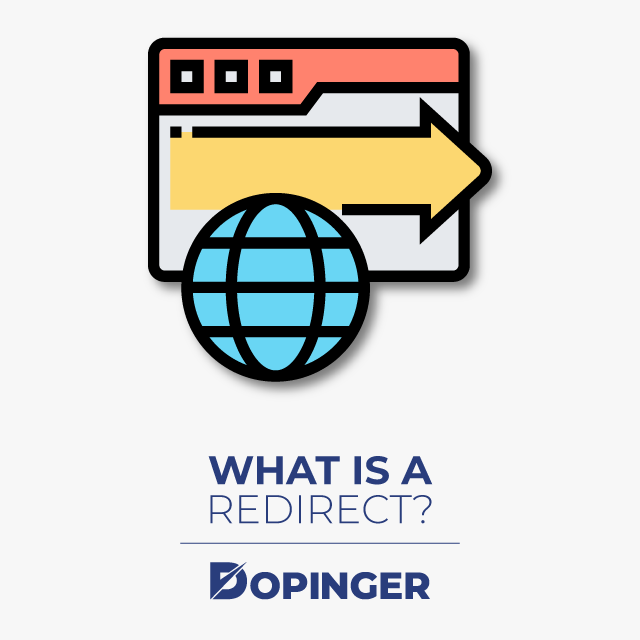If you are a web designer or have a website, you might be wondering what 301 redirect is. As you can guess from its name, it is redirecting a web page to another. Of course, it can be done for multiple pages as well. That is why it is crucial for website owners to know what it is and how to do it.
What Is a Redirect?
URL redirection is introducing a web page under more than one URL address. When someone clicks on a link or an address, the user is directed to an address that is different than he/she clicked. This is a redirect. For example, you may have two websites with different extensions such as ‘.com’ and ‘.net’ and redirection connects them together and sends the user to one page.
There are three types of redirects that you must know before we get into the details of the 301 redirect. Because you can do different things in each one of them and it is important to know the difference. We can number three redirect types:
- 301 redirect (moved permanently)
- 302 redirect (found) or 307 (moved temporarily)
- Meta refresh.
302 & 307 Redirects
There is a protocol called ‘HyperText Transfer Protocol (HTTP.) This protocol determines how URLs work. There are two versions, 1.0 and 1.1. The 1.1 version is the 302 HTTP status code, which is ‘moved temporarily. The other one is the successor of the 302 redirect, and it is called ‘found’ now. These types of redirects move the content temporarily. It is best to use this type of redirect when you want to tell the search engine that your page is compatible and moved only for a temporary time.

Meta Redirects
Meta refreshes, on the other hand, are another technique for redirecting pages. They are not at a server level, yet they are more focused on the page level redirects. Meta refreshes are popular with their five-second countdown that states the text: ‘If you are not redirected in five seconds, click here.’ They are not the best type of redirect techniques to be used in SEO since they are not functional for user experience and not on the server level.
301 Redirects
301 redirect is a permanent redirect. It is the case where the URL is permanently moved from one location to another. The link equity is very high in this redirect; it almost reaches to 100%. It is thought to be the safest way to do redirect websites, and it is recommended to use this method over others at any time because it is better for users and search engines at the same time.
When you do a 301 redirect, there is no turning back, because you move your URL permanently. You can use these redirects when you move your website to a new domain, when you want people to access your website from several URLs, and when you are merging two websites.
The response of the search engine will be quicker and more direct when you do a 301 redirect. That is why even Google recommends website owners to use this method as well.

How to do 301 Redirects?
The very first thing you should do is to write the code for your redirection. Here is how it goes: Redirect 301/http://www.thenameofyourwebsite.com/ then save the file that has this code as .htaccess and get it on your website by uploading it. If you are using the .htaccess method, then it is already done for you.
If you are redirecting your URL to a non-URL, you have to use another code. Here is how to do it:
- Options+FollowSymLinks
- RewriteEngine on
- RewriteCond %{HTTP_HOST} ^youroldsite.com
- RewriteCond %{HTTP_HOST} ^www.youroldsite.com
- RewriteRule (.*) https://yournewsite.com/$1 [R=301,L]
Again, when you’re finished, save the file and upload it to your website. However, don’t save the file as .htaccess this time. Once you save your file, you will have successfully done a 301 redirect.

SEO and 301 Redirect Relation
When moving your URL or directing to multiple URLs, 301 redirect makes sure that your SEO is accurate when these changes happen. That is why many SEO experts recommend using this method when redirecting. 301 redirect is also related to the PageRank. When you wanted to implement 301 redirects from one domain to another, there would be a loss of PageRank. However, it is not an issue any more thanks to Google’s fix for this situation.
It is also very useful for rebranding and renaming. When your company is changing the name of their brand or the name of their website, a 301 redirect comes very handy. It can maintain the power of inbound links in the original link and transfer them safely to the new one. 301 redirect also sends the website visitors to the new address even when they search for the old address. That is why it is pretty useful for these changes.
When you purchase domains that are similar to your name to drive traffic to your website, you can use this method to get organic traffic as well. If the domains are very similar to your website or brand, purchase them and redirect them to your website. 301 redirect will be quite helpful in this process.
It is also good for tracking advertisements. With using URLs in banner ads, you can track responses. And when you implement 301 redirects to these ads, you can drive organic traffic to your website from the URLs.
Conclusion
We have explained what 301 redirect is. If you are moving your URL to another or directing to multiple URLs, the best way to do it is by using the 301 redirect method. It permanently moves your URL and can be crawled by search engines quickly. It is also useful for keeping your website visitors and PageRank.
If you want to learn more about such topics, please read our latest articles about SEO. You may be interested in what is .htaccess.
Frequently Asked Questions About
No, in fact, it is the best way to redirect your web pages without damaging your SEO works. It is also PageRank friendly since it does not cause any losses after Google’s fix in 2019.
If you are not temporarily moving your website for updating or repairing, you can use this method anytime. This way you can maintain your ranking and inbound links.
There is no limit for doing it. However, if you do too many 301 redirects, it will reduce the speed of your server.





No comments to show.